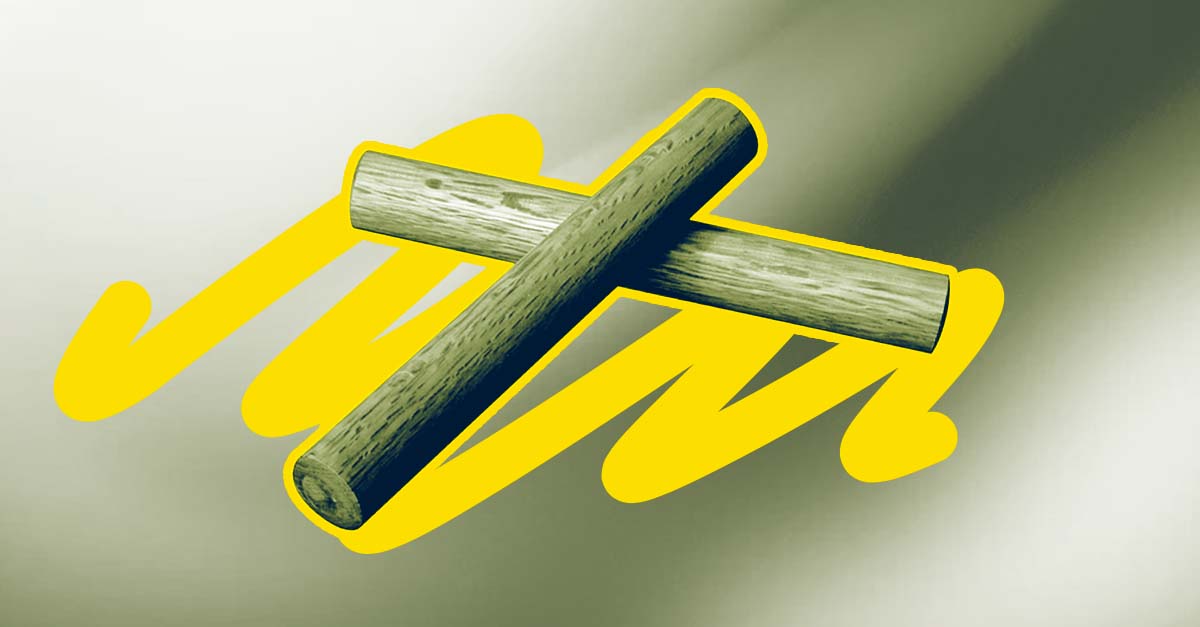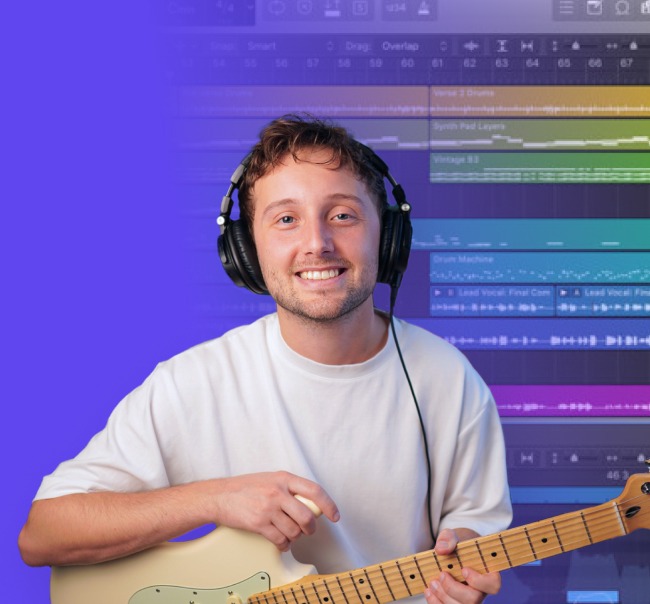
5 Clave Variations: How The Clave is Used in Afro-Cuban Music and Beyond

The clave is one of the most important rhythms in modern music—and while it’s rooted in Afro-Cuban and Latin American music traditions, its influence is felt in pop, hip-hop and beyond.
That’s why learning about the music theory behind the clave, its variations and how modern producers use claves to add addictive rhythms to their music is super useful.
In this article, we’ll explore everything you need to know about the clave rhythm—its origins and the instruments that traditionally were used to play these rhythms.
We’ll also explore the son, bossa nova and rumba variations of the clave and we’ll look at some examples of how claves are used in modern pop music.
Ready to master the clave? Let’s dive in!
Hot tip: We’re constantly publishing new articles about music theory, so if you want to keep learning share your email and get new ideas, theory lessons and music production tutorials delivered to your inbox every week!
Never miss a post from the LANDR Blog.
Get the newsletter weekly.
What is a clave?
The clave—pronounced clah-vé—is the underlying rhythm pattern used in Afro-Cuban and Latin American music—it is used particularly in mambo, salsa, Brazilian bossa-nova music and other forms of Latin jazz.
Since the clave serves as a tool for rhythmic organization in traditional Afro-Cuban music, the clave rhythm is usually played throughout a song with minimal variation.
Clave is the Spanish word for clef or key—hinting at the importance of rhythm in these genres.
What instrument is a clave played on?
Traditionally the clave is played by a percussionist on… the clave—a specific percussion instrument made from two round dowels of wood that are hollowed out to create a high-pitched clicking sound.
However, the clave of course is not limited to being played on the wooden clave instrument.
Drummers will use a cross-stick on the snare drum to recreate the wooden click of claves.
For example, drummers will use a cross-stick on the snare drum to recreate the wooden click of claves.
You’ll also hear it played on cowbell and woodblocks or even simply clapped out in many Afro-Cuban tunes.
The clave isn’t solely played by percussionists either—bassists and pianists will often center their ostinatos around the clave’s rhythm.
The percussionist may be the primary instrumentalist playing the clave, but in reality, everyone plays to the clave—since in Latin music it represents the center of rhythm.
Types of clave
There’s many variations of the clave in Latin music since different genres will demand different claves.
In general, one repetition of a clave rhythm will take up one bar of 4/4 music and revolve around a complete 3:2 or 2:3 rhythmic ratio.
If you don’t know much about rhythmic ratios you might want to brush on your polyrhythm and polymeter theory and you might want to learn how to read sheet music.
But to explain rhythm ratios as simply as possible—the first half of the 4/4 bar in a 3:2 clave will have three beats played over two quarter notes with two beats played over the remaining two quarter notes in the second half.
Really, the best way to understand claves is to see, hear and play them yourself, so let’s explore the five most popular clave variations.
1. The son clave
The son clave is the most common clave, it’s used extensively in mambo, salsa and other styles of Latin jazz.
Here’s what a 3:2 son clave looks and sounds like.

Notice how in the 3:2 version, this third note is an eighth note played on the “and” of two.
This placement of the third note is what makes this clave a son clave instead of the nearly identical cousin the rumba clave.
To create a 2:3 version of any clave you just reverse the rhythm.
To create a 2:3 version of this clave you would reverse the rhythm, starting with the group of two and following with the group of three.
This Tito Puente track “Salsa Y Sabor” authentically uses the son clave throughout.
Let’s look at the rumba clave next.
2. The rumba clave
The rumba clave is the less common cousin of the son clave, you’ll hear it used as a variation to the sol clave in Afro-Cuban music—especially in rumba music itself.
Here’s what a 3:2 rumba clave looks and sounds like.

Take a look at the placement of the third note in the 3:2 version of the clave. Instead of being played on the “and” of two, it’s instead delayed by one-sixteenth note written on the “a” of two.
Like the son clave, to get a 2:3 version of this clave you reverse the pattern.
If you want to play this clave pattern you’ll definitely need to brush up on your syncopation chops, since the added sixteenth note is a very small difference that can be hard to feel.
Here’s an example of a track using the rumba clave.
3. The standard bell pattern
The standard bell pattern combines elements of both clave patterns and it’s used extensively in afro-cuban, latin music and even Brazilian samba music so we’ll group it in with them.
But, unlike the rumba and sol claves, it doesn’t alternate between rhythmic ratios and it’s typically played on a cowbell or the bell of a drummer’s ride cymbal.
Here’s what the standard bell pattern looks and sounds like.

Carlos Antonio Jobim’s famous tune “Wave” oscillates between the bell pattern and the bossa nova clave, for example.
4. The bossa nova clave
Since we touched on Brazillian music with the bell pattern, it seems appropriate to mention on the most famous claves out there—the bossa nova clave.
This variation of the Son clave is heavily used in bossa nova music from Brazil, here’s what it looks and sounds like.

Notice how it’s identical to the Son clave, except for its last note which is played as a delayed eighth note on the “and” of four—instead of as a quarter note landing squarely on the count of four.
Here’s a classic example from the great bossa nova artist Carlos Antonio Jobim with “Desafinado”.
5. The tresillo
The tresillo rhythm uses the first three notes of a 3:2 clave and is considered to be an incomplete rhythm since it only uses half a clave and has no rhythmic cadence.
Here’s an example of how a tresillo looks and sounds.

This incompleteness makes the tresillo an excellent rhythm for building tension—which is why you’ll hear it used often in pop and EDM build-ups as well as reggaeton music.
The tresillo is often used often in pop and EDM build-ups as well as reggaeton music.
Here’s an example of a tresillo being used prominently and the main rhythm in Ed Sheeran’s “Shape of You”.
Specifically, the dem-bow beat used in reggaeton is directly inspired by the basic clave pattern and of course the tresillo being the rhythmic basis for so much pop music.
@landrmusic Can you feel the beat? #learnontiktok #learnwithme #drummertok #drummersoftiktok #songfacts #whatdoesitmean #reggaeton #rnbvibes ♬ original sound – LANDRHow clave is used in EDM, house and trap
The clave rhythm’s versatility truly shines when you consider its profound influence on modern music genres such as EDM, house, and trap.
In the realm of Electronic Dance Music (EDM), the clave rhythm often underpins syncopated basslines and lead synth lines.
For instance, the tresillo variation of the clave—specifically, its tension-building quality—is frequently utilized in build-ups before the drop.
This rhythmic tension and release that clave’s are known for lend themselves well to EDM’s build-up and drop song formats.
House music also showcases the clave rhythm in creative ways.
The rhythm’s inherently danceable quality, combined with house’s four-to-the-floor beat, often results in irresistible grooves.
As house music borrows heavily from Latin and African musical traditions, it’s not uncommon to hear clave rhythms within percussive elements like conga or cowbell or within the music’s rhythmic structure.
Trap music’s employment of the clave rhythm is a testament to its adaptability.
Trap, known for its complex hi-hat patterns and deep 808 basslines, often uses a sped-up or modified form of the clave rhythm, especially in the hi-hats.
This provides a rhythmic contrast to the typically slower melodic elements and contributes to trap’s characteristic sound.
The clave rhythm is so versatile that it can be adapted to any tempo or time signature, and it can be used with various instruments or even electronically produced sounds.
Whether subtly influencing a track’s rhythm or driving the groove as a prominent percussive element, the clave is a potent tool in the arsenal of modern music producers.
There’s no one way to clave
If you’ve been paying attention, it’s clear that claves aren’t exclusively used in Afro-Cuban music—these rhythms are used everywhere and have even inspired entire genres.
So don’t be afraid to take inspiration from the clave and use it in your own music.
Follow a clave pattern in your bass parts, or use it on the keys or as a way to create and ease tension. These tricks are go-to’s for so many producers out there.
And remember, you don’t necessarily have to follow any rules with your clave patterns, there’s nothing wrong with switching up a classic clave pattern to make a new rhythmic centre.
In fact, now that you know what to listen for, you’ll probably hear variations on clave patterns in a lot of different music.
So, practice clapping out clave patterns on your own, learn to identify them in the music you hear and have fun experimenting with them in your own creations!
Did enjoy learning about claves? We’re constantly putting out new articles about music theory so if you want to keep learning share your email and get new ideas, theory lessons and music production tutorials delivered to your inbox every week!
Never miss a post from the LANDR Blog.
Get the newsletter weekly.
Gear guides, tips, tutorials, inspiration and more—delivered weekly.
Keep up with the LANDR Blog.




